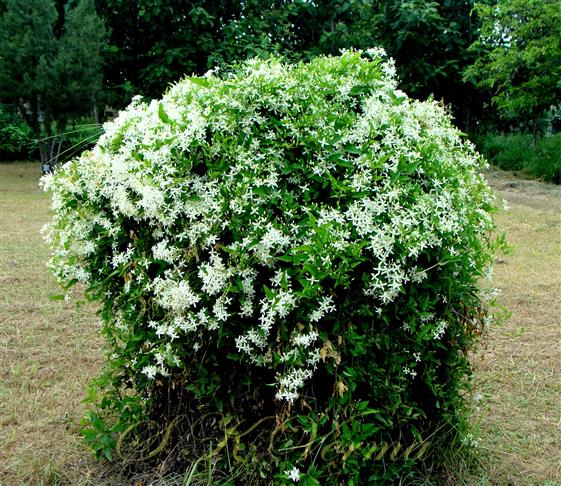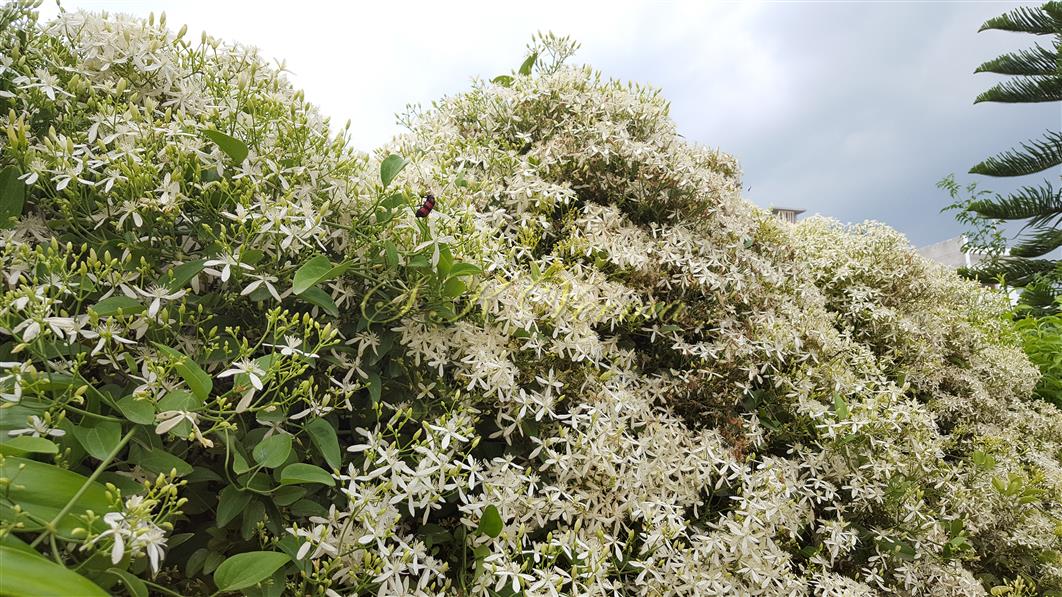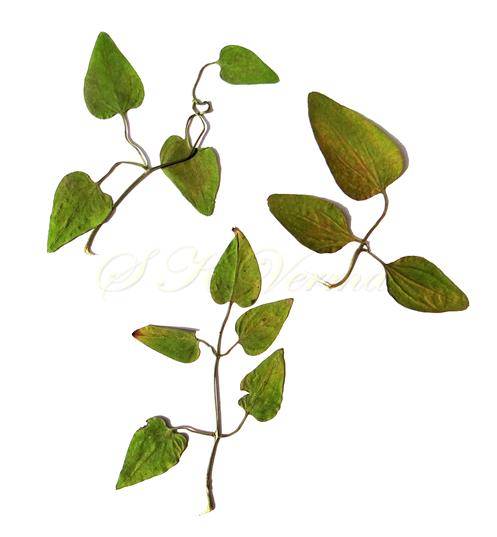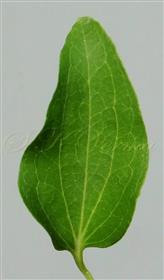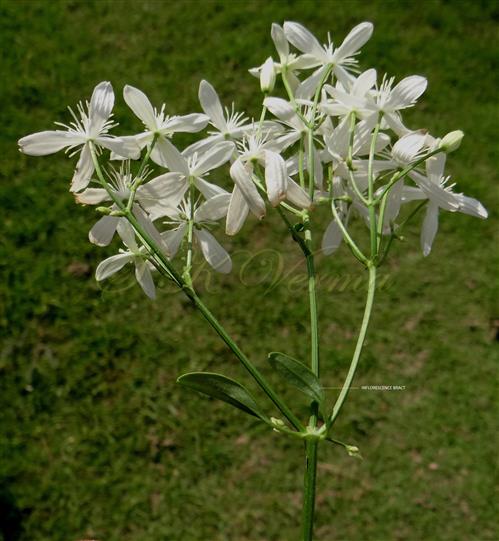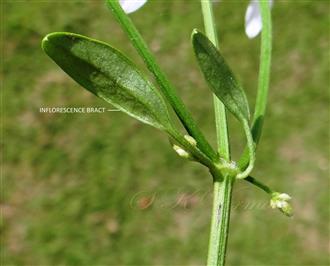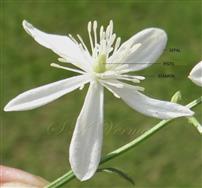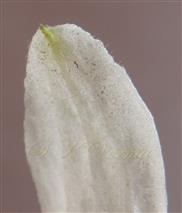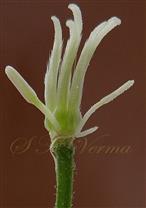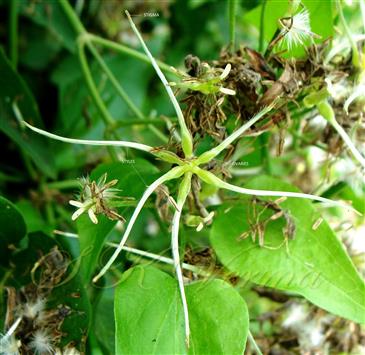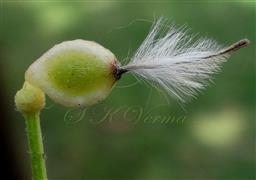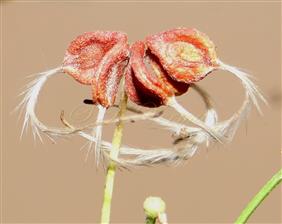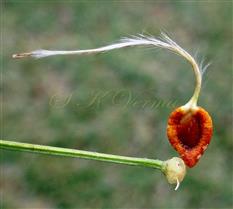Clematis
Clematis L., Sp. Pl. 1: 543. 1753; Gen. Pl. 5: 242. 1754; Boiss., Fl. Or. 1: 2. 1867; Hook. f. & Thoms. in Hook. f., Fl. Brit. India 1: 2. 1875; Qureshi & Chaudhari, Pak. Syst. 4(1-2): 121. 1988; Wencal & Bartholomew, Fl. China @ eFloras.org 6: 333; Pringle, Fl. North Amer. @ eFloras.org vol. 3; Riedl & Nasir, Fl. Pak. @ eFloras.org p. 83.
Vines to erect shrubs, perennial, rarely annuals. Leaves opposite, rarely alternate or whorled, simple or ternately or pinnately divided, leaf or leaflet blades palmately veined. Inflorescences paniculate cymose (sometimes solitary or 2-4 in fascicles), usually pedunculate, 2-bracteate. Flowers actinomorphic, bisexual or unisexual, hypogynous. Sepals 4 or 5(-8), petaloid, white, blue, violet, red, yellow or greenish, spreading, ascending or erect, usually valvate. Petals absent. Stamens numerous, sometimes outer ones sterile and becoming linear or petaloid staminodes; anthers introrse. Carpels numerous (5-150), forming a small subglobose head, usually pubescent or villous; ovaries 1-ovuled, ovules pendulous; style often much elongated after anthesis, plumose hairy; stigma simple. Fruits achenes, aggregate, sessile, lenticular, nearly terete or flattened-ellipsoid, sides not prominently veined; beak terminal, straight or curved.
384 species
Clematis terniflora
Clematis terniflora DC., Syst. Nat. 1: 137. 1817; Fl. China @ eFloras.org 6: 357; Fl. North Amer. @ eFloras.org vol. 3; Clematis recta subsp. terniflora (DC.) Kuntze, Verh. Bot. Vereins Prov. Brandenburg 26: 114. 1885.
Vines woody; stems climbing with tendril-like petioles and leaf rachises, 3-6 m; branches shallowly 4-10-grooved, puberulous or strigose or only nodes puberulous. Leaves opposite, imparipinnate (3-) 5 (-7) foliolate, up to 34 cm long (including petiole and rachis up to 16 cm long); petioles 2.5-7 cm long; leaflet blades ovate to narrow ovate or ovate-lanceolate, 2.2-9.5 cm x 0.9-6 cm, subleathery, both surfaces sparsely appressed-strigose, especially on veins, or glabrous, base rounded, truncate, subcordate, cordate or broadly cuneate, margin entire, apex acute to obtuse, mucronate; leaflets palmately veined, basal veins abaxially prominent to nearly flat; lateral petiolules 2-2.5 cm long, terminal petiolule up to 5 cm in length, petiolules adaxially channelled; petioles, petiolules and rachis pilose. Paniculate cymes (dichasial) axillary or terminal, usually many-flowered, peduncle 1-8 cm; bracts 2, linear, elliptic or oblong, foliaceous, 0.8-3.5 cm long. Flowers actinomorphic, bisexual, hypogynous, 1.4-4 cm across, fragrant, greenish-white or white; pedicels 0.5-2(-4.5) cm long, strigillose or glabrous. Sepals 4(-5), petaloid, white or greenish-white, spreading, obovate-oblong to oblong, 0.5-2 cm x 0.2-0.6 cm, with +/- parallel veins, abaxially puberulous, adaxially glabrous, margin abaxially velutinous or tomentose, apex acute to obtuse. Petals absent. Stamens numerous (up to 50), 3-8 mm long; filaments glabrous; anthers narrowly oblong to oblong, 2-3 mm long, apex obtuse or minutely apiculate; staminodes absent. Pistils 5-7 forming a small subglobose head; ovaries ca. 1 mm long, pubescent, unilocular with one pendulous ovule; style 4-7 mm long, densely villous; stigma simple. Achenes orange-yellow, broadly elliptic to obovate, 4-8 mm x 2.5-6 mm, conspicuously rimmed, appressed-pubescent; style persistent, 1.7-3 cm long, plumose.
Common Names: Sweet Autumn Clematis, Sennin-So, Sweet Autumn Virgin's bower, Fall Clematis, Leather leaf Clematis, Yam-leaved Clematis
